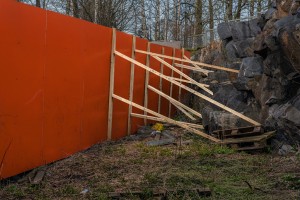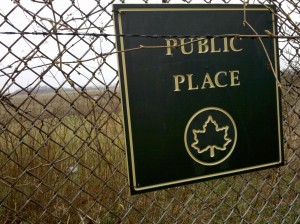Warning: Undefined array key "ssba_bar_buttons" in /home/robinder/public_html/wp-content/plugins/simple-share-buttons-adder/php/class-buttons.php on line 598
Warning: Undefined array key "ssba_bar_buttons" in /home/robinder/public_html/wp-content/plugins/simple-share-buttons-adder/php/class-buttons.php on line 598
Warning: Undefined array key "ssba_bar_buttons" in /home/robinder/public_html/wp-content/plugins/simple-share-buttons-adder/php/class-buttons.php on line 598
Warning: Undefined array key "ssba_bar_buttons" in /home/robinder/public_html/wp-content/plugins/simple-share-buttons-adder/php/class-buttons.php on line 598
Warning: Undefined array key "ssba_bar_buttons" in /home/robinder/public_html/wp-content/plugins/simple-share-buttons-adder/php/class-buttons.php on line 598
Warning: Undefined array key "ssba_bar_buttons" in /home/robinder/public_html/wp-content/plugins/simple-share-buttons-adder/php/class-buttons.php on line 598
Warning: Undefined array key "ssba_bar_buttons" in /home/robinder/public_html/wp-content/plugins/simple-share-buttons-adder/php/class-buttons.php on line 598
Introduction
Recently, my public university announced its intention to begin a large-scale interdisciplinary initiative focused around clusters. As part of the initial phases of the planning, the Center for Excellence in Teaching and Learning asked a variety of faculty members with interest/experience in interdisciplinarity to contribute a “a one-page document that synthesizes and distills information about interdisciplinarity from your professional perspective.” I agreed to do this, but it became clear as I worked that I couldn’t really distill things into a page without oversimplifying what I wanted to contribute; and since the message that I mainly want to contribute is that we need to complicate and deepen our thinking on interdisciplinarity before we go any further into this work, I can’t quite provide the 1-page document.
But I am radically committed to thinking through how interdisciplinarity can contribute to the future of higher education, and especially interested in how interdisciplinary models can strengthen both the public education system and the communities it serves. Thus, I am going to offer my ideas here, as distilled as I can offer them. I hope this post will help galvanize those of us who are critical and cautious, but who truly believe that interdisciplinary models for higher ed can offer some tangible ways to benefit our public good.
- A shared vocabulary will help us communicate, disagree, customize, and engage.
I teach “Introduction to Interdisciplinary Studies,” and in that course we start by defining a bunch of terms. But one of the assignments we generally do is that students craft their own definitions (for example, of “interdisciplinary studies”) after reading some of the more popular scholarly definitions from the field. I believe that a shared list of terms will help us communicate in a common language, which will then allow us to more effectively explain the places where we disagree about what we are doing here. There are no correct or ubiquitous answers for what “interdisciplinarity” is, but if we are going to customize an interdisciplinary initiative at our institution, we need to be informed about the key concepts in the field, and engage with a scholarly community that is wider than our own immediate faculty and administration.
For my list of basic key terms, click here: http://robinderosa.net/key-terms/
2. We should stop saying “We are already doing this.”
“Recent fortunes in institutionalization may have mainstreamed interdisciplinarity, but they have not provided material and conceptual support for its development. These factors make interdisciplinarity as a radical research or pedagogic position difficult to sustain.” Veronica Vasterling (et al), “Practising Interdisciplinarity in Gender Studies” (2006)
Interdisciplinary Studies (IDS) has long suffered from the academy’s inability to take it seriously as a field. While IDS allows for interdisciplinary collaboratives, the theory and practice of IDS is, in itself, a field of study with disciplinary borders. We tend to treat the teaching of IDS courses as a rotational duty that any faculty member with an interest in interdisciplinarity could teach, regardless of their familiarity with the content. In addition, we tend to identify successful cross-disciplinary projects at our universities and mistakenly extrapolate, making claims that our university structures support that kind of work, even when involved people could tell you how challenging it was to get those projects up and running, and how many barriers they faced along the way. We should not mistake our own interest in interdisciplinarity, our faith in its power to transform culture, or our own experience working outside of our disciplines in small ways over the years as evidence for an institutional commitment to interdisciplinarity. We need to start with a candid assessment of the MATERIAL investments the university has made to interdisciplinarity and of the CONCEPTUAL investment it has facilitated amongst its faculty and students, in particular. In the case of my own university, there is little evidence that we have dedicated material resources or invested in conceptual learning to provide a framework for the kind of sustained initiatives we are now exploring. So we need to adjust our investments on these two levels to make the work possible. As interdisciplinary scholar Julie Klein notes, “‘Everyone is interdisciplinary today’ is a proclamation belied by evidence.” Let’s not undersell interdisciplinarity by negating the real work it takes to engage in its practice.
3. Interdisciplinarity will not save us.
“The history warns us repeatedly of the dangers of exaggeration, excessive claims of novelty, and imitation, especially of a simplified model of scientific research. It emphasizes the centrality of humility, learning the basics and doing one’s homework, and recognizing and appreciating variety and variability.” Harvey J. Graff, Undisciplining Knowledge: Interdisciplinarity in the Twentieth Century (2015)
There is no evidence that I can find that clusters, interdisciplinary initiatives, or transdisciplinary partnerships established by rural public universities like my own will generate significant revenue streams for institutions. In fact, some evidence seems to exist that over-hyped claims and the “weak interdisciplinarity” that is generated in the wake of those claims actually works to destroy programs. In his new book, Graff looks at the history of disciplines, interdisciplinary initiatives, and interdisciplinary fields (“interdisciplines”), suggesting that interdisciplinary initiatives that are undertaken in a historical vacuum are ultimately doomed to fail. It’s daunting to think that in order to work together, we will first need to understand how our own disciplines grew up, how IDS interacts with those disciplines, and how new integrated areas have emerged. But Cognitive Science, Cultural Studies, Sociology, Bioscience: they all emerged in distinct ways, in ways embedded in the politics and conditions of the academy and culture in different eras. We should be willing to see interdisciplinary innovation as historically produced, not as a new invention or magical panacea. This certainly offers one reason why the Humanities (particularly History) are so important to any interdisciplinary start-up: we need to learn how different fields have come to take the shapes they now have, explore how they have interacted with each other and with interdisciplinary theory and practice, and create realistic clusters that are well-positioned to develop in the specific ways that work best for their particular interdiscipline.
4. We should find out what doesn’t work, and what does.
In The Politics of Interdisciplinary Studies: Essays on Transformations in American Undergraduate Programs, Augsburg, Henry, Newell, and Szostak provide a concluding chapter focused on case studies of successful and unsuccessful IDS programs. Now, undergraduate IDS programs are different than clusters, for sure, but there is some helpful information here that we should mine. For example, the authors list a number of conditions that correlate with the failure of interdisciplinary programs: deans who do not understand interdisciplinarity; advisory councils and IDS faculty who do not understand IDS as a field; the investing in expensive pedagogical initiatives and attributing the full expense to interdisciplinary programs; lack of administrative support; reliance on overburdened faculty or the kindness of strangers in departments; reliance on contingent labor. On the other hand, there are factors that correlate with successful programs: interdisciplinary activities are integrated with disciplines; innovation is ongoing, and the educational landscape is understood to be constantly evolving; at the same time, successful initiatives do not insist on being in a state of “constant revolution,” and are able to stabilize at points and recognize what is working; governance of interdisciplinary programs is mixed between wide councils with cross-disciplinary loyalties along with dedicated faculty whose primary loyalties are to the interdisciplinary program; attention is paid to assessment; external funding is pursued where appropriate; the case is made for increased resources when needed. The bottom line is that there is research out there about the risk factors for interdisciplinary programs, and if we know more about those risk factors, we can control for them. Additionally, if we know where other programs have found success, we can engage in informed practice to move us towards success. We need to survey this research on IDS programs, and look for more case studies on clusters from universities like our own (public, rural, teaching-oriented).
5. We should commit to integrating our investment in interdisciplinary with our mission as a public university.
While some models of interdisciplinarity focus on competition, problem-solving, discovery and invention, and building partnerships with private business and donors, there are other models– not necessarily incompatible with this one– that focus on collaboration, inquiry, cultural critique, and public service. While social entrepreneurship can be a nice bridge between these two wings of interdisciplinary practice, it doesn’t always make sense as a guiding model for scholars in the arts or Humanities (for example). We need to make sure that we 1) don’t justify the liberal arts or Humanities by subjugating them to an entrepreneurial model and demonstrating how they can serve a cluster that is focused on developing a new product or delivering a solution to a concrete social problem; and 2) don’t abandon all hope of public funding models for higher education. By making a case for contextualizing and conceptualizing modes of integration (in addition to problem-solving modes), we can better articulate the value of interdisciplinary work in the arts and Humanities. We can use our interdisciplinary vocabulary to articulate to the legislature and to taxpayers the value of research and learning that enriches the community in varied ways.
There is value in partnering with business to service the immediate needs of our local and global economies. But some applied, competency-based programs are no more than job-training, that feed graduates into entry-level positions at companies that will terminate them when the knowledge economy shifts and they are unable to grow with the requirements of their jobs; then those companies, who help set the competencies at some universities, simply hire the next batch of new graduates. This seems like a win-win, as the economy gets workers, and graduates get jobs. But this ultimately only enriches the companies, as long-term job security is hard for vocationally-trained workers to achieve in a knowledge economy where content is doubling every 13 months and jobs are changing shape rapidly.
While we should support entrepreneurial projects and partnerships with private industry, we also need to think more broadly about how to build a strong public, a community of citizens where everyone is able to live fulfilled and secure lives. Our rhetoric can embrace both of these approaches, and as a public university– even one as radically underfunded as ours is— we can stay focused not just on producing future leaders and generating revenues, but on developing a healthy regional and global community where people can work together to create learning networks where they can continue to grow and thrive throughout their lives.
6. We need to invest in conceptually-driven infrastructure, of the hi- and lo-tech varieties.
In my opinion, interdisciplinary work is intimately tied to networked and connected learning. In earlier decades, I still believe this was true, but it certainly looked different. Today, I think we are in an exciting time when the old networking on the golf course has been replaced with a new kind of online networking. While the first worked on a principle of exclusivity, the latter spins on the twin axes of open and participatory. Taking a page from Howard Rheingold’s Net Smart, I would suggest that in order for our university to truly engage in collaborative, transdisciplinary, applied, experiential, or global initiatives, we will need to develop literacies in networked learning; conceptual models for how technology can assist us in our interdisciplinary work; sound critiques that highlight the limits and problems of technology-driven democratization of education; and practical technology infrastructure in terms of mediated spaces, tools, and services. Key concepts to explore might include: participatory culture; collective intelligence and knowledge networks; privacy; the strength of weak ties; the changing definition of social capital; students-as-producers and other open pedagogy models; Open Educational Resources (OER); etc. Email and the LMS can only take us so far when we are endeavoring to connect our work to work in other departments, at other universities, in private business or public service organization, in other countries, etc.
Relatedly, we need to take a look at our lower-tech infrastructure and remove barriers to interdisciplinary research and learning. What might have to change? The credit hour; classroom configurations; the block schedule; team teaching pay protocols; what counts as “credit generating”; cross-listing protocols; the relationship of the graduate school to undergrad programs; how curriculum is approved; the relationship between accreditors and some programs; the distinctions between student life and academic work; etc. The bottom line is that if we expect to arrive at an interdisciplinary outcome, we can’t travel the same road we’ve always traveled using the same maps we’ve always consulted. We need to be willing to plan new routes, invest time in learning new skills, pave new paths, and maybe even reimagine our car altogether.













Robin, I cannot fully express how important this essay is. All my life I have found the need to draw connections between and among concepts and subject areas which seem unrelated. In my presentations and my research I play a game wherein the challenge is to always relate new information to my primary individual subject (LIW) and refuse to fail.
Reading this essay is having an immediate effect upon my short and long-term goals, even as I am composing this response. At the risk of sounding trite, “my mind is blown.”
I wish I had been working on this more when you were here… I imagine the kinds of projects we could have collaborated on! 🙂